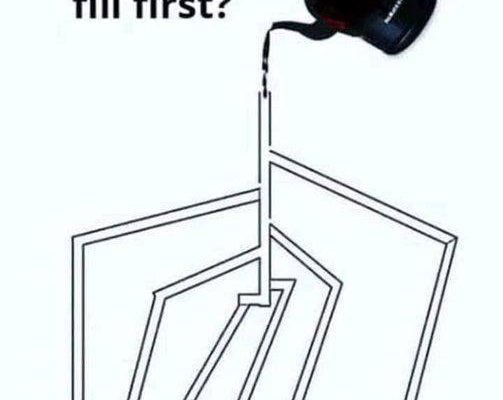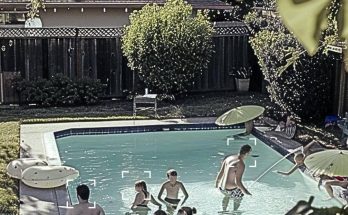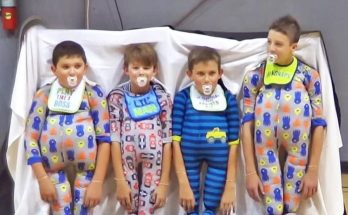1. Which Cup Fills Up First?
Let’s start with a classic brainteaser. You’re presented with an image of several cups connected by pipes, and your goal is to figure out which cup will fill up first when liquid is poured into the system. At first, it looks simple, right? Just trace the flow of the liquid. However, this riddle is a lot more challenging than it seems. Many people rush to an answer, but often overlook important details.
If you take a closer look at the image, you’ll notice that some paths leading to the cups are blocked. Specifically, the pathways to cups 7, 5, 4, and 3 are closed off, meaning those cups won’t fill up at all. The only open paths lead to cups 1 and 6. As the liquid flows through the pipes, it bypasses the blocked routes and heads straight to cup 6. So, the correct answer is that cup 6 will fill up first! If you figured this one out, congratulations—you’ve got a sharp eye for detail. If not, don’t worry—this puzzle has tripped up many!
2. The X-Ray Riddle
Now for something a little more abstract. This riddle asks: “You can’t see me, but I can see through you. What am I?” The answer to this riddle is an X-ray. While we can’t see X-rays with our eyes, this invisible radiation allows doctors to look inside the human body, revealing bones, organs, and other structures hidden beneath the skin. X-rays are essential tools in the medical world, used to diagnose all kinds of conditions. Even though they’re invisible to us, X-rays “see through” us, making them a fitting solution to this riddle.
3. The Connecting Riddle
Here’s a riddle that’s both simple and meaningful: “What connects two people but only touches one?” The answer is a wedding ring. This small but powerful symbol of love and commitment physically touches just one person, but it represents the bond between two. A wedding ring, worn on the finger, is a constant reminder of the emotional and legal connection shared by partners. It’s a great example of how a single object can carry a lot of meaning.
4. The Head and Tail Riddle
This one is a classic: “I have a head and a tail but no arms and legs. What am I?” The answer is a coin. Every coin has two sides, often referred to as the “head” and “tail.” The head typically features a prominent figure or face, while the tail side usually displays a design or symbol. Despite having no limbs, the coin fits the description perfectly, being a small object used for everyday transactions.
5. The Tongue Riddle
Finally, here’s a fun one: “I have a tongue, and though I can’t walk, I’m known to get around. What am I?” The answer is a shoe. A shoe has a part called the “tongue,” which sits beneath the laces. While shoes can’t move on their own, they are essential for helping us get around by protecting our feet. This clever use of the word “tongue” makes it a great answer to this riddle.
Conclusion: Riddles That Make You Think
These riddles remind us that sometimes the answers are hiding in plain sight—we just need to think a little differently to see them. Whether it’s figuring out which cup fills up first or realizing that a shoe has a “tongue,” riddles challenge us to look beyond the obvious and tap into our problem-solving skills. Did you solve them all? If not, don’t sweat it—riddles are meant to challenge our thinking and stretch our minds. Keep testing yourself with new puzzles, and remember that the key to solving tricky riddles is often thinking outside the box!



